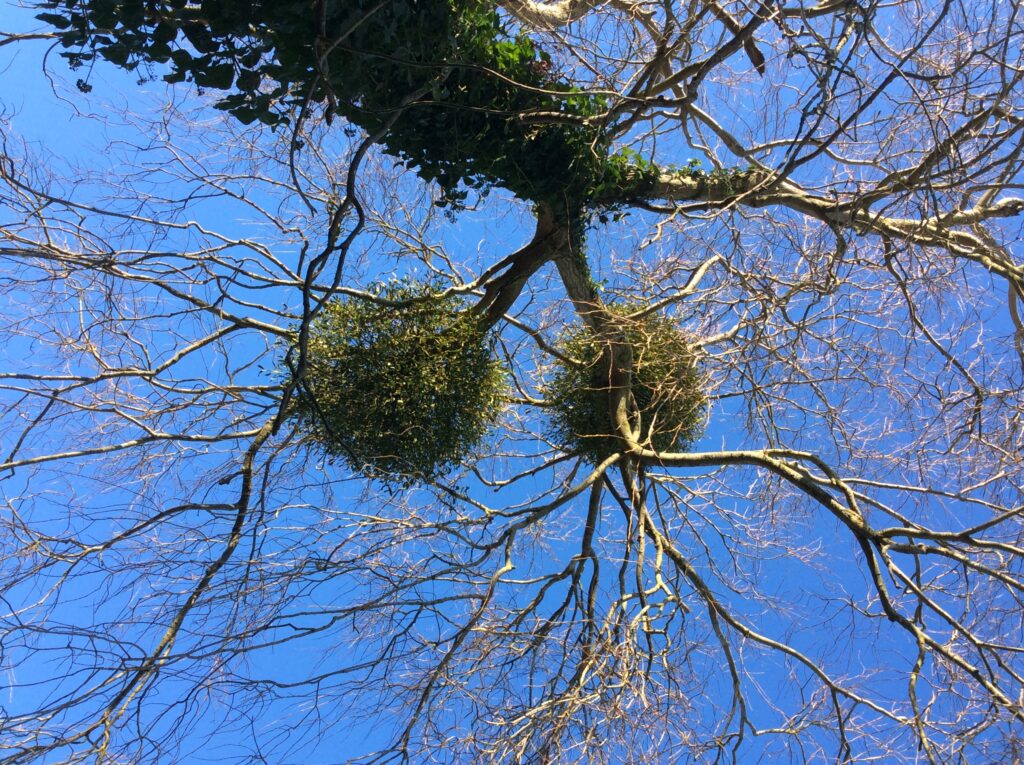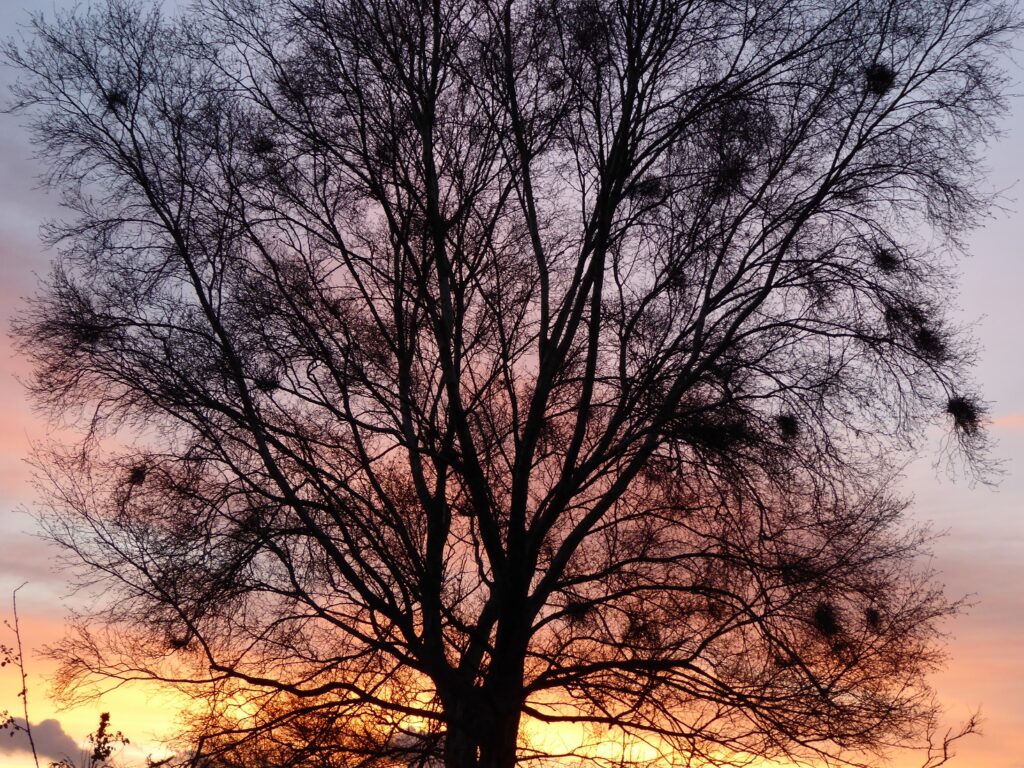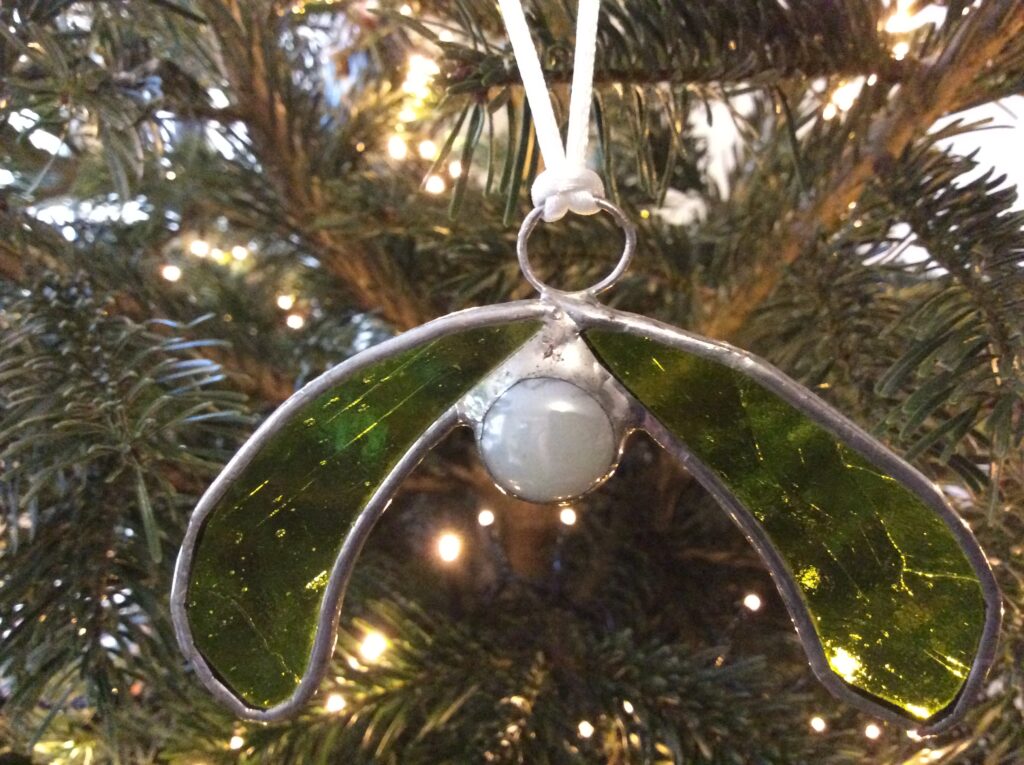
Now that winter is upon us and the broadleaved trees have dropped their last leaves, you may wonder ‘what are those strange balls of greenery, high up on the branches of the bare trees?’
Read on to find the answer and learn about some fascinating traditions.
Answer: Mistletoe. Look carefully up at the large, rounded clumps and you’ll notice the mistletoe’s distinctive forked branches and pairs of symmetrical evergreen leaves. It is a semi-parasitic plant which attaches itself and lives on a host tree using specialised roots to absorb water and mineral nutrients but produces its own food by photosynthesis. During the winter, its clusters of semi-translucent white berries are eaten by birds, such as the mistle thrush and blackcap, which squeeze out and wipe the sticky seeds off their beaks onto branches, where they take root. This is how mistletoe is found growing on trees – ingenious!
Easier to spot in the winter, look for the large rounded balls of mistletoe silhouetted against the winter sky. Crab apple trees are particularly good hosts but it also commonly grows on cultivated apple trees, hawthorn, popular, lime and willow.
Be careful not to confuse mistletoe with witches’ broom – this is a dense mass of small twigs growing amongst the branches of a tree which looks like a bird’s nest or an upside-down broom. This strange deformity is caused by a fungal disease which stimulates extra woody growth. It was once thought that these were the old and useless brooms discarded by witches. In the New Forest, witches’ broom is common and widespread on silver birch trees.

During December, mistletoe is firmly part of our Christmas celebrations and I’m sure you would recognise a sprig of mistletoe. But why is it so symbolic?

The tradition of gathering and hanging mistletoe in the house dates back to the times of the ancient Druids. Being evergreen, it was supposed to possess mystical powers and bring good luck to the household and wards off evil spirits. It was also used as a sign of love and friendship in Norse mythology. In the Middle ages it was associated with fertility and vitality – maybe this is helps explain the custom of kissing a lover under a sprig of mistletoe.
A variation of this tradition required that each time a couple kissed they plucked a white berry from the mistletoe – when all the berries were gone so was the sprig’s kissing power. Be sure not to eat the berries as they are toxic to humans!
Some activities to try:
I-spy winter berries – Winter berries are an important food source for many birds and small mammals during the winter. How many different types and colours of berries can you spot? Black – sloes, juniper and ivy; white – mistletoe and snowberry; red berries – holly, dogrose and rowan. Interesting fact: Mistletoe, like holly trees, are either male or female. It is only the female plants that produce the berries.
Make a kissing bough – Also known as a mistletoe bough, it was a traditional Christmas decoration in Tudor Times made of woven wooden hoops to make a sphere that were hung with evergreen foliage. Like wreaths, they were hung on a wall or over doorways to welcome guests. The addition of mistletoe allowed young men to claim a kiss!
Wishing you all a very festive Christmas.
